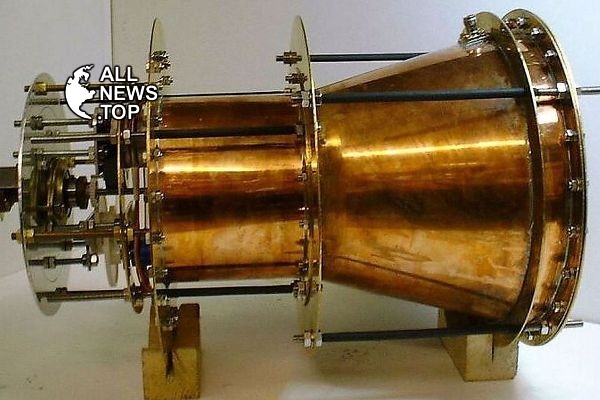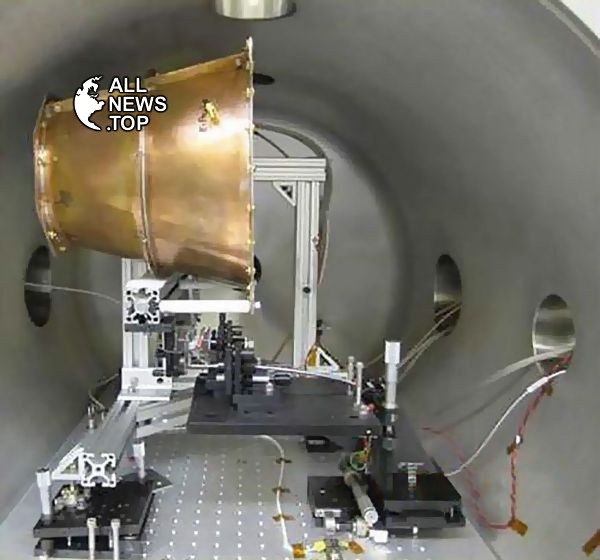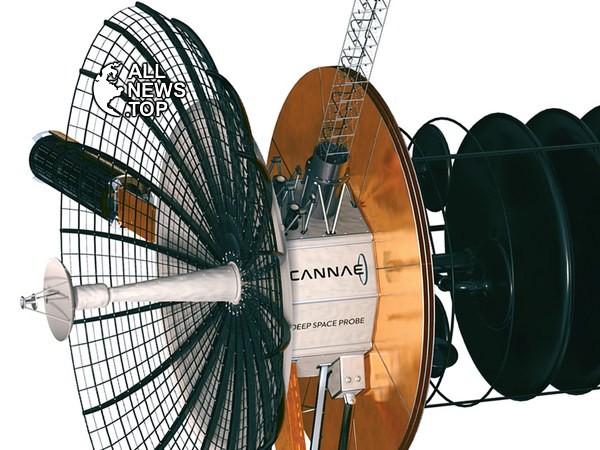
Chinese scientists have once again decided to surprise the whole world with the impossible. To be more precise, China is testing the “impossible” EmDrive engine in space...At a press conference held in Beijing, Dr. Chen Yue from the Chinese Academy of Space Technology (CAST) announced that his The country has been successfully testing this technology in the laboratory for a long time. Moreover, China has now tested the operation of the engine on board the Tiangong-2 space station. The statement only fueled a debate that has been going on for almost 10 years. After all, the question of whether EmDrive works is actually equivalent to an argument with Baron Munchausen about the possibility of pulling yourself out of the swamp by your hair, and even with your horse. Let's try to figure it out.

This story began in 2001, when British engineer Roger Shawyer founded a small company, Satellite Propulsion Research Ltd. He was helped in this by a grant received from the British Department of Trade and Industry and some private investors. The good reputation of the engineer, who had extensive experience in the space industry, had an impact. In particular, Scheuer was an employee of EADS Astrium, one of the world's largest spacecraft manufacturers, for 20 years. As a result of the work, in December 2002, the first working prototype of the “impossible” engine, called EmDrive, was presented to the public. In fact, the device was a hollow copper conical resonator, soldered at both ends. A magnetron, a device that generates microwave radiation, was attached to the resonator. Such magnetrons are widely used, for example, in microwave ovens.

The operating principle of EmDrive immediately raised many questions among specialists. The inventor himself claims that the operation of the engine is described by long-known physical laws and no “new physics” is needed to explain it. It is known that electromagnetic waves can transfer energy and momentum. The effect of light pressure has been well studied and is even used to orient some spacecraft. In EmDrive, the waves created by the magnetron experience multiple reflections in the internal cavity of the resonator and put pressure on its walls. But then the most controversial part in the theory begins. According to Scheuer, it is possible to choose the size and shape of the resonator and the length of the electromagnetic waves emitted by the magnetron in such a way that the pressure on the side walls of the cone will be zero. Then it turns out that the pressure on the large and small bases of the cone will be unequal, and a thrust will arise in the engine in the direction of the plane of the base of a larger area. However, this fact contradicts the laws of physics, namely Newton's third law.

The fact is that the only way of moving in outer space that humanity has so far mastered is jet propulsion. It is based on the law of conservation of momentum. Thrust in a jet engine occurs due to the fact that the launch vehicle or spacecraft ejects matter in the direction opposite to the movement. One of the main characteristics of such an engine is called specific impulse - this is the ratio of the impulse created by the engine to fuel consumption. Thus, the higher the specific impulse value, the less fuel the spacecraft spends to change speed. The greater the speed at which matter leaves a jet engine, the higher the specific impulse. Such an engine can accelerate a spacecraft to greater speed while using less fuel. That is why ion engines have recently become increasingly popular in the space industry. They have low thrust but high outflow rates, making them very effective for long-duration space missions. However, they also face the main problem of all jet engines - a limited supply of fuel. Another well-known way to travel in space is a space sail. Such a device will use to move the pressure of sunlight or solar wind - a stream of charged particles flying away from our star at high speeds.

Also, several projects have recently been presented that propose to accelerate a vehicle with a sail using high-power laser radiation. But, despite the abundance of such projects, they are still far from effective practical application. Both the jet engine and the space sail Author: GEximius


 Chinese scientists have once again decided to surprise the whole world with the impossible. To be more precise, China is testing the “impossible” EmDrive engine in space...At a press conference held in Beijing, Dr. Chen Yue from the Chinese Academy of Space Technology (CAST) announced that his The country has been successfully testing this technology in the laboratory for a long time. Moreover, China has now tested the operation of the engine on board the Tiangong-2 space station. The statement only fueled a debate that has been going on for almost 10 years. After all, the question of whether EmDrive works is actually equivalent to an argument with Baron Munchausen about the possibility of pulling yourself out of the swamp by your hair, and even with your horse. Let's try to figure it out.
Chinese scientists have once again decided to surprise the whole world with the impossible. To be more precise, China is testing the “impossible” EmDrive engine in space...At a press conference held in Beijing, Dr. Chen Yue from the Chinese Academy of Space Technology (CAST) announced that his The country has been successfully testing this technology in the laboratory for a long time. Moreover, China has now tested the operation of the engine on board the Tiangong-2 space station. The statement only fueled a debate that has been going on for almost 10 years. After all, the question of whether EmDrive works is actually equivalent to an argument with Baron Munchausen about the possibility of pulling yourself out of the swamp by your hair, and even with your horse. Let's try to figure it out.



